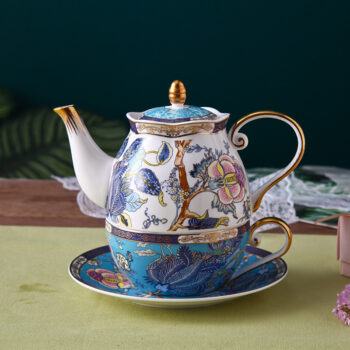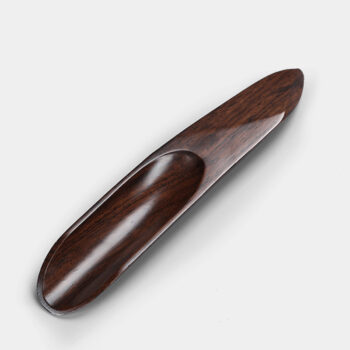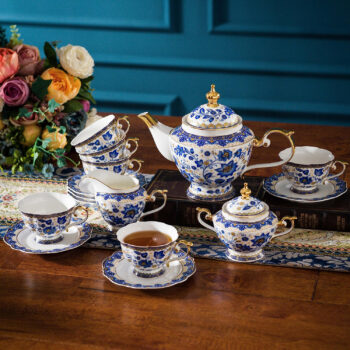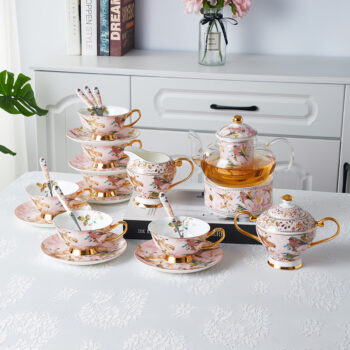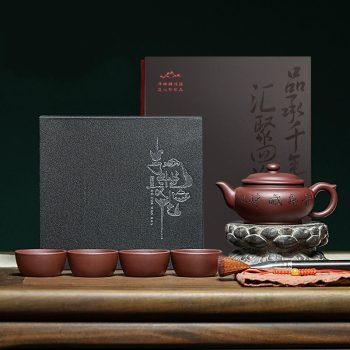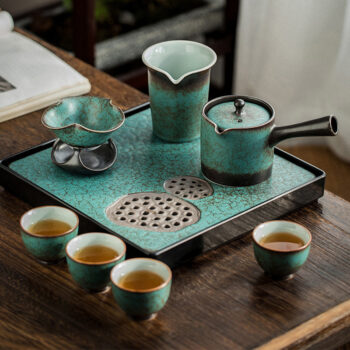Japanese Tea Sets
Warning: Attempt to read property "ID" on null in /www/wwwroot/teasetbox.com/wp-content/plugins/mas-static-content/includes/class-mas-static-content-shortcodes.php on line 81
What Is a Japanese Tea Set Called?
More Than Just a Teapot
A Japanese tea set isn’t simply a group of teaware — it’s an invitation to slow down. Built on centuries of tradition, these sets reflect a way of life that values presence, balance, and intentional living. Whether you’re steeping sencha on a quiet morning or welcoming friends for matcha and sweets, the right tea set turns each moment into a small, peaceful ritual.
What’s Inside a Japanese Tea Set?
While styles vary, most Japanese tea sets include a few essential pieces:
- Kyusu or Side-Handle Teapot: The classic side-handle teapot is designed for easy, controlled pouring.
- Hōbin or Tilang Pot: A handle-less or straight-handled teapot used for richer brews.
- Cha Hai (Fair Cup): Used to evenly distribute tea from the pot to the cup, so each pour is consistent.
- Yunomi: Small, handle-less cups that enhance aroma and promote slow sipping.
- Drip Tray or Tea Tray: Keeps the setting neat and centred.
Each item brings form and function together, inviting a calm, deliberate pace to the tea experience.
Why Kyusu or Side-Handle Teapot Is the Star
The side-handle Kyusu is the heart of many Japanese tea sets. Its horizontal grip allows for a comfortable pour without tilting the wrist. Most designs include a built-in strainer at the spout—ideal for loose-leaf green teas like gyokuro or sencha, where clarity and timing matter. It’s simple, efficient, and beautifully intuitive.
How Japanese Tea Sets Are Used
Brewing with a Japanese tea set is more than just making tea—it’s an act of care. Here’s how it typically unfolds:
- Start with high-quality loose tea.
- Heat water and allow it to cool slightly (especially for green tea).
- Warm the teapot and cups before use.
- Add the tea leaves, pour water gently, and steep briefly.
- Use a fair cup to portion the tea equally.
This quiet process encourages mindfulness, even on the busiest of days.
How to Choose the Right Japanese Tea Set
Size and Material: Finding Your Fit
Choosing the right Japanese tea set depends on how and when you drink tea.
- Small teapots (5–12 oz) are perfect for solo sessions or focused brews.
- Clay or ceramic sets retain warmth and bring earthy charm — ideal for winter.
- Porcelain adds elegance and brightness, well-suited for gatherings or gifting.
- Each material subtly shapes the flavour and feeling of your tea.
Style That Speaks: Wabi-Sabi Aesthetics
Many Japanese tea sets are inspired by wabi-sabi, a philosophy that finds beauty in natural textures and imperfect finishes. Expect soft, muted tones, hand-glazed surfaces, and unique kiln marks. If you’re drawn to simplicity and authenticity, a wabi-sabi style set is more than decor—it becomes part of your daily rhythm.
When Design Meets Daily Use
A beautiful tea set should also be easy to live with. Look for:
- Kyusu pots with ultra-fine mesh filters
- Slender spouts for smooth, spill-free pouring
- Compact trays that frame your set and catch stray drops
These details make each tea session smooth, clean, and satisfying.
A Gift That Slows Time
A Japanese tea set makes a thoughtful gift for birthdays, housewarmings, weddings, or anyone needing a peaceful pause. It’s a way to say: take a breath, make a cup, enjoy this moment. With timeless appeal and real-world usefulness, it’s a present that lingers long after the wrapping is gone.


